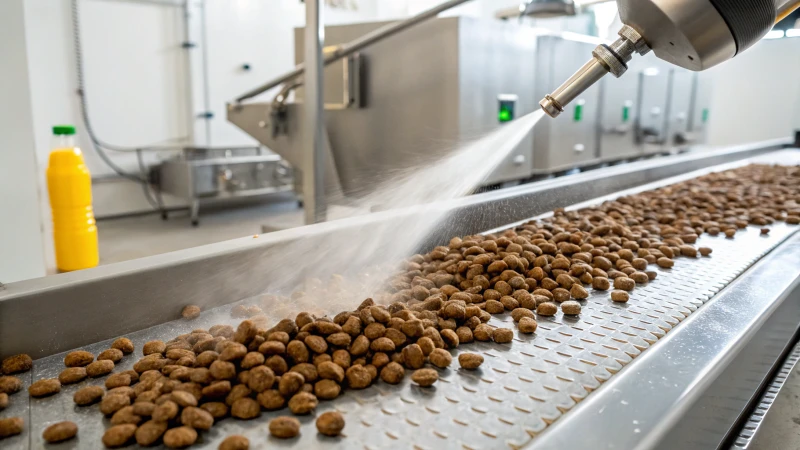 darin® pet food extruder[/caption]
darin® pet food extruder[/caption]
In the world of food extrusion and plastic processing, the design of extruder screws is critical. If the screw design is poor, it leads to problems like uneven material mixing, low output, poor material quality, and machine wear. In particular, when dealing with high-viscosity materials, sensitive temperature control, or precise mixing needs, ordinary single-thread screws often fall short. Twin-thread screws are specially designed to address these challenges. They improve material transport, enhance mixing performance, reduce shear force, and stabilize pressure. This dramatically increases product quality and machine productivity. If you’re serious about upgrading your extrusion capabilities — whether in food processing, plastics, or specialty materials — understanding the role of twin-thread screws is essential. Let's dive deeper into their application.
Twin-thread screws in twin-screw extruders are primarily used to enhance material conveying efficiency, improve mixing performance, stabilize melt pressure, and minimize shear damage, making them ideal for applications that require precise material processing such as pet food production, plastic compounding, and specialty material extrusion.
When considering extrusion processes, twin-thread screws are particularly valuable because they offer synchronized material feeding and stable pressure conditions inside the extruder. This encourages readers to explore further how these screws make a difference compared to traditional single-thread designs.
Twin-thread screws are exclusively used in twin-screw extruders.False
Twin-thread screws can also be applied in specialized single-screw designs for enhanced throughput, though they are most commonly found in twin-screw extruders.
How Twin-Thread Screws Work in Twin-Screw Extruders
Twin-thread screws are essentially extruder screws that have two parallel helical channels wrapped around a central shaft instead of just one. In a twin-screw extruder, two screws rotate together (either co-rotating or counter-rotating) inside a barrel. This configuration allows for highly efficient conveying, kneading, shearing, and mixing of materials, leading to more consistent product quality.
Key functions of twin-thread screws include:
| Feature | Purpose | Benefit |
|---|---|---|
| High Conveying Efficiency | Moves material quickly through the extruder | Increases production speed |
| Uniform Mixing | Mixes ingredients thoroughly and evenly | Consistent product texture and quality |
| Pressure Stability | Maintains steady melt pressure | Reduces defects and material wastage |
| Low Shear Processing | Gentle treatment of materials | Ideal for heat-sensitive products |
| Flexibility | Handles wide variety of materials | Broadens application scope |
Applications of Twin-Thread Screws
Twin-thread screws are widely used in:
- Pet Food Production: Producing kibble, treats, and specialty diets that require exact mixing and cooking.
- Plastic Compounding: Blending polymers with additives, colors, and fillers.
- Specialty Material Extrusion: Extruding materials like biodegradable plastics, high-moisture foods, or pharmaceuticals.
- Chemical Engineering: Precise handling of temperature-sensitive chemical blends.
Below is an application mapping:
| Industry | Application Scenario | Twin-Thread Screw Advantage |
|---|---|---|
| Pet Food | Complex ingredient blends (meat, grains, vitamins) | Uniform distribution and precise cooking control |
| Plastics | Polymer + Additive compounding | Prevents additive separation, ensures homogeneity |
| Food | Snack production, breakfast cereals | Expands efficiently and crisps properly |
| Pharmaceuticals | Controlled release granules | Low-shear mixing preserves active ingredients |
Key Advantages Over Single-Thread Designs
- Improved Self-Wiping Action: In twin-screw extruders, the screws clean each other during rotation, preventing material build-up and improving sanitation — a crucial advantage in food applications.
- Better Degassing: Volatile materials and moisture can be removed more easily due to continuous pressure profiles.
- Higher Customizability: Modular twin-thread screw elements can be rearranged to fine-tune processes, unlike single-thread designs.
Case Study Example: Twin-Thread Screws in Pet Food Production
At Darin Machinery, our twin-screw extruders equipped with twin-thread screws have been pivotal in scaling up production for major pet food brands. For example, a client producing premium grain-free dog treats reported a 20% improvement in output and a 15% reduction in energy costs after switching from traditional single-thread screws to our twin-thread system.
The table below summarizes their results:
| Metric | Before (Single-Thread) | After (Twin-Thread) | Improvement |
|---|---|---|---|
| Output (kg/h) | 500 | 600 | +20% |
| Energy Use (kWh/kg) | 0.45 | 0.38 | -15% |
| Product Consistency | Moderate | Excellent | Major Improvement |

Conclusion
Twin-thread screws are not just a technical detail — they are a fundamental upgrade for modern extrusion processes. By improving material flow, mixing, pressure control, and energy efficiency, they unlock higher-quality production across food, plastics, and chemical industries.
If you're planning to enhance your extrusion line or face challenges in your current production, it's time to consider upgrading to a twin-screw extruder equipped with twin-thread screws.
Contact Darin Machinery for Tailored Twin-Screw Extrusion Solutions
At Darin Machinery, we specialize in designing and manufacturing advanced twin-screw extruders with precision twin-thread screw systems. Whether you are upgrading your pet food production line, launching a new plastic compounding facility, or innovating in specialty foods, we have the expertise and solutions you need.
👉 Contact Darin Machinery today for technical consultation and customized equipment solutions to boost your production performance!











